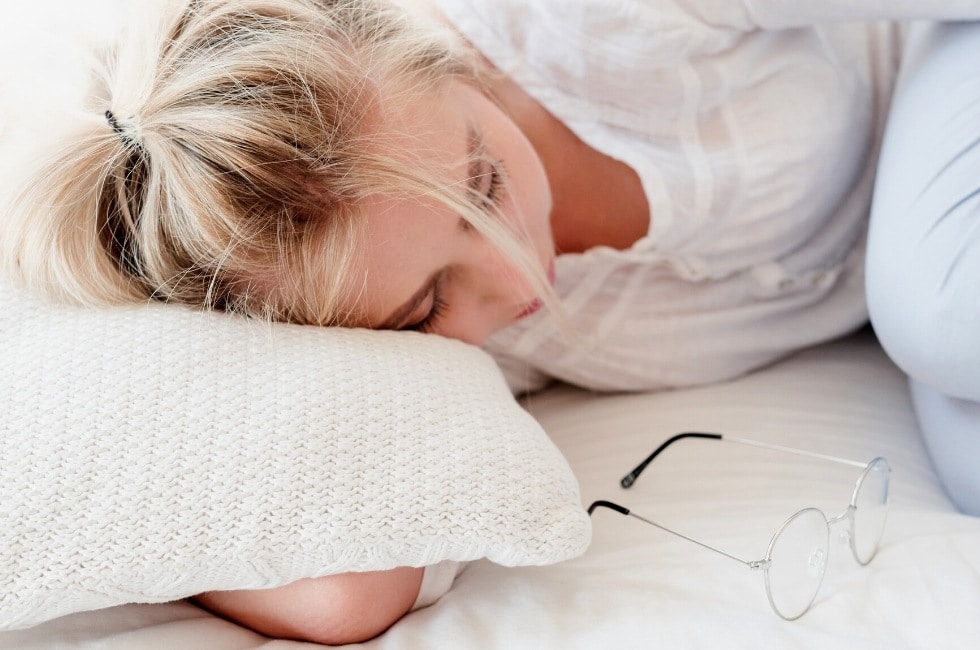Life Without Daytime Glasses | Smart Vision Optometry, Sydney
It’s called Orthokeratology, and it involves using contact lenses. But instead of someone wearing contacts by day, says Sydney behavioural optometrist and fellow of the International Academy of Orthokeratology and Myopia Control (FIAOMC), Gary Rodney, they will be wearing them while they sleep.
Orthokeratology, or Ortho-K, is designed to guide the eyeball into its optimal shape for focus, potentially reducing myopia or astigmatism. There’s even conclusive evidence that Orthokeratology can slow the progression of myopia in children, a finding that Gary Rodney finds particularly satisfying.
Strange as the idea of wearing contact lenses by night may sound, Ortho-K has been around for a while, and it has been stringently tested. The notoriously careful FDA in the United States found that 65 percent of patients selected for the treatment achieved 20/20 vision, with over 90 percent achieving a rating of 20/40 or better. 20/40 is considered as being “slightly” nearsighted – a person who may or may not decide to wear glasses.
The Orthokeratology Process
It all begins with an eye examination by an optometrist who has studied the field of orthokeratology – better still if they have been accredited to be a Fellow of Orthokeratology. If an initial examination indicates that Ortho-K can help, he or she will map the cornea’s surface using a corneal topographer. It’s contact-free, much like any other eye test, and the information it gathers will be used to make customised contact lenses.
“Usually, your lenses will flatten and mould the cornea somewhat,” says Gary. “The lenses are hard, but not uncomfortable, especially once you’ve grown accustomed to wearing them.” In the morning, after you remove your contact lenses, the cornea remains flattened for the day, allowing for clearer focus without glasses. “It is just like when you remove a finger ring that has been worn for a while there is an indentation that stays on the finger for the next day. That’s orthok but ion microns of shape change. In most instances, it takes about two weeks to achieve the full shaping process for which each set of lenses is designed,” says Gary. In a complex scenario, the person will go through three sets of lenses since shaping the cornea is a gradual process.
Having reached the desired shape, the cornea can’t be left to itself. It’s best for most people to keep wearing retainer lenses every night, or at least most nights, in order to enjoy being able to see without glasses by day.
Sleeping with Contact Lenses Can Have Benefits
Gary Rodney says that kids and people with active lifestyles often benefit form Ortho-K. “For example, you shouldn’t surf with contacts, and unless you’re going to get prescription surfing goggles, you can’t do it with glasses either,” says Gary. “Kids, on the other hand, like rough and tumble, and glasses or contacts are less practical by day.”
And, of course, some people don’t want to wear glasses, and either don’t want to, or can’t, wear contacts by day. From a practical perspective, using Ortho-K lenses has a similar effect to glasses or contact lenses. They correct vision but don’t have a permanent effect if one stops wearing them. However, it is used at night, and there are a lot of personal and practical reasons why people choose this option instead of opting for glasses, regular contacts, or surgery to correct their vision.
Most tantalising of all is the possibility that Orthokeratology could slow the progression of myopia, especially in children. “There’s a rise in myopia,” says Gary, “and Eyes in Design is particularly interested in myopia control, particularly in children. Helping them to see better for longer would be the ultimate goal Eyes in Design would like to achieve.”
HEAR: Ultra106.5FM Interview with Gary Rodney – Covid and Myopia: What you need to know!
For more information on Orthokeratology and Smart Vision’s approach to myopia management, or to book an appointment, visit the Smart Vision website: Optometrists Sydney: Optometry Services For Children and Adults | Smart Vision; for specific information about Myopia treatment and prevention visit Myopia Prevention: Solutions, Control And Treatment In Sydney; and for detailed information about Myopia Treatment visit Orthokeratology In Sydney: The Non Surgical Alternative.
Image A Life Without Glasses
Schedule You Vision Skills Assessment Today!







